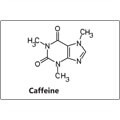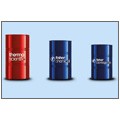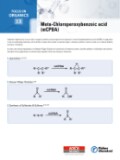Organic compounds
Organic compounds are basically compounds that contain carbon and hydrogen. The simplest organic compound is methane, which contains one carbon atom covalently bonded to four hydrogen atoms.
MoreFeatured Resources

Chemical Structure Search
Easily search for the organics you need by drawing the chemical structure. Search Now

Specialized Chemical Services
See how our custom services and solutions can support your unique needs. Learn More
-
Acros Organics Focus on Organics: Aluminum Hydrides and Borohydrides as Reducing Agents Flier
Learn about using these compounds as reducing agents for carbonyl groups and similar functionalities.
-
Acros Organics Focus on Organics: Meta-Chloroperoxybenzoic Acid Flier
Explore key applications for meta-chloroperoxybenzoic acid and helpful literature references.
-
Acros Organics AcroSeal Packaging Catalog
See how AcroSeal packaging protects organic solvents and pyrophoric and hazardous reagents that are sensitive to air and moisture.
-
Maybridge HitCreator Library Flier
Use the diverse and high-quality Maybridge HitCreator screening library to find drug-like compounds for your drug discovery process.
- Maybridge HitCreator Library Flier (409.9 KB)
More
-
Acros Organics Focus on Organics: Products for Organobromination Chemistry Flier
Explore the Acros Organics organobromine compounds commonly used as intermediates in organic synthesis.
-
Alfa Aesar Organics Flier
Explore the comprehensive range of Alfa Aesar organic building blocks, functional reagents, and other organic chemicals.
- Alfa Aesar Organics Flier (181.9 KB)
-
Acros Organics Review of Organosilanes in Organic Chemistry Brochure
Learn more about Acros Organics organosilanes and their use as protecting groups to intermediates and other roles in organic synthesis.
-
Acros Organics Focus on Organics: The Synthesis of Lisinopril Flier
Find Acros Organics products used to synthesize lisinopril, a commonly prescribed generic medication for treating hypertension.









